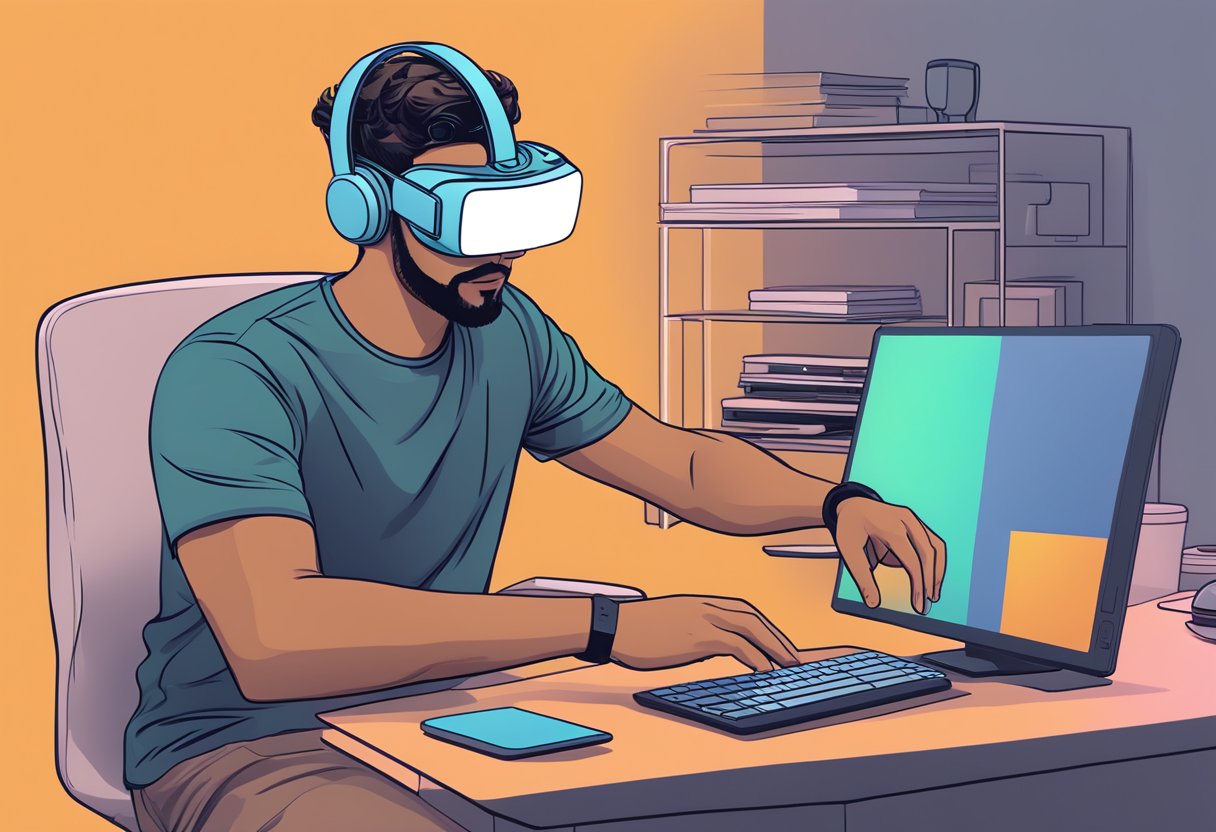WebXR is a technology that combines virtual and augmented reality experiences with web-based applications. React Native is a popular framework for building cross-platform mobile applications. By leveraging WebXR in React Native, developers can create immersive experiences that can be deployed on both iOS and Android devices.

With the increasing popularity of virtual and augmented reality, WebXR has become a crucial technology for developers looking to create immersive experiences. By allowing users to interact with virtual objects in a natural way, WebXR has the potential to revolutionize the way we interact with technology. React Native, on the other hand, has become a popular choice for developers looking to build mobile applications that can run on both iOS and Android devices. By combining these two technologies, developers can create immersive experiences that can be deployed on a wide range of devices.
Índice De Conteúdo
Fundamentals of WebXR in React Native
Understanding WebXR
WebXR is a technology that allows developers to create immersive experiences for users by combining virtual and augmented reality. It enables users to interact with virtual objects as if they were real. WebXR is an open standard that is supported by most modern browsers, including Chrome, Firefox, and Safari.
Integrating WebXR with React Native
React Native is a popular framework for building mobile applications. It enables developers to build cross-platform apps using a single codebase. Integrating WebXR with React Native can be done using libraries such as react-native-webxr and react-native-aframe. These libraries provide developers with the necessary tools to create immersive experiences in their React Native apps.
Essential WebXR Components
WebXR provides developers with several essential components to create immersive experiences. These components include:
- Scene: The scene is the virtual environment in which the user interacts with virtual objects.
- Entity: An entity is a virtual object that can be interacted with in the scene.
- Camera: The camera is the user’s viewpoint in the virtual environment.
- Controller: A controller is a physical device used to interact with virtual objects in the scene.
Developers can use these components to create immersive experiences for users in their React Native apps. By leveraging WebXR in React Native, developers can create unique and engaging experiences that can help to differentiate their apps from the competition.
Developing VR and AR Experiences
Developing virtual and augmented reality experiences can be a challenging task, but with WebXR and React Native, it’s now easier than ever before. This section covers the key steps involved in building VR and AR experiences using these technologies.
Building Virtual Reality Interfaces
To create virtual reality interfaces, developers need to design immersive environments that engage users and provide them with a sense of presence. This involves creating 3D models, animations, and interactive elements that users can interact with. React Native provides a range of tools and libraries that make it easy to build VR interfaces, including Three.js, A-Frame, and React 360.
Developers can use these tools to create custom VR components, such as buttons, menus, and interactive objects, that can be incorporated into their VR experiences. They can also use React Native to build VR applications that run on a variety of devices, including smartphones, tablets, and VR headsets.
Creating Augmented Reality Views
Augmented reality experiences are created by overlaying digital content onto the real world. To create AR views, developers need to use technologies such as image recognition, object tracking, and spatial mapping. React Native provides a range of tools and libraries that make it easy to build AR experiences, including ARKit, ARCore, and ViroReact.
Developers can use these tools to create custom AR components, such as markers, animations, and interactive elements, that can be incorporated into their AR experiences. They can also use React Native to build AR applications that run on a variety of devices, including smartphones and tablets.
Performance Optimization for WebXR
One of the biggest challenges in building VR and AR experiences is ensuring that they perform well on a variety of devices. To optimize performance, developers need to consider factors such as frame rate, memory usage, and rendering time.
React Native provides a range of tools and libraries that make it easy to optimize performance for WebXR applications. These include tools for profiling and debugging, as well as libraries for optimizing rendering performance and reducing memory usage.
By using these tools and libraries, developers can ensure that their VR and AR experiences run smoothly on a variety of devices, providing users with a seamless and immersive experience.

